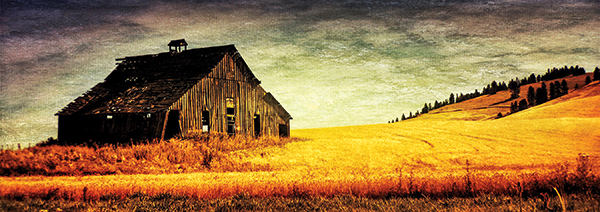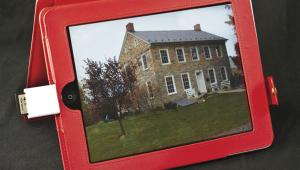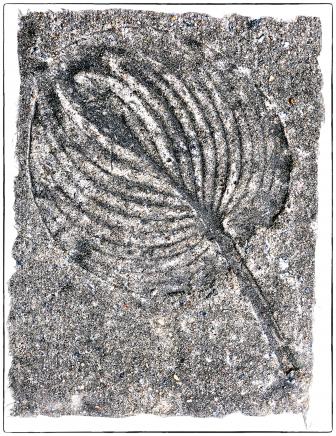Going Mobile: Photographer Tony Sweet's Favorite Smartphone Apps for Outdoor Photography

All Photos © Tony Sweet
Tony Sweet says that smartphone photography “isn’t officially part of the show” at his photography workshops, but the subject does come up with increasing frequency. “They’ll do their big camera work first,” Sweet says of the students, “then they’ll pull out the phones and shoot a few things, discuss among themselves, and ask me some questions.”
He’ll give them ideas for getting the most from the phones, but if there are several people interested—“five out of 10, say”—he’ll carve out some time for a smartphone mini class.
“The first thing they say is that often their files are too small for whatever they want to do with them,” Sweet says, “so I point out that not all apps are full resolution. So that’s step one: choose apps that’ll give the resolution that’ll allow you to do what you want with the images.”
Next he’ll offer a list of apps in a practical hierarchy: definitely get this one; try that one; consider using this other one. Then it’s a matter of figuring out what might be going wrong and applying the basic rules of photography. “There’s metadata for iPhone photos,” Sweet says, “so plug into Lightroom or whatever software you have, and it’ll tell you the shutter speed and other settings, and you can often trace a problem back to that. If it’s not sharp and it was taken at 1/30 second, okay, now you know: low light, long exposure, you need a tripod or a GorillaPod.”


Apps of Interest
At first Sweet wasn’t a big fan of smartphone photography. Photos from his first iPhone weren’t very good, but when he heard that fine art photographer Dan Burkholder was taking iPhone potential seriously, Sweet began to investigate. He did a lot of reading and a lot of practicing as the next generations of iPhones upped the level of the game. “Burkholder took to it almost immediately,” Sweet says. “I kind of followed his lead and eventually saw the possibilities.”
What he saw was that the possibilities were pretty much made possible by the apps he chose. “Because of the apps, the iPhone is like Photoshop in your pocket—no exaggeration. The iPhone camera captures raw material; the rest is up to me and the apps.”
His prime, go-to app is Snapseed. “It’s like a Raw processor for the iPhone—incredibly powerful—and it’s got control points for sharpness, saturation, contrast, structure, and exposure adjustments to specific areas of an image.”
He also likes the 645 PRO Mk III app, which in addition to other features offers a three-image HDR series, film modes that emulate classic film stock, and the choice of the look of seven camera formats from 6x6 square to 6x17 panorama. “You’re into real photography at that point,” Sweet says of the 645 app.
One of the key factors in his overall appreciation of iPhone photography—he’s currently shooting with the 6 Plus—is that all his post-processing, all the effects and treatments, are done in the phone. “I don’t take these images home and transfer them to my computer and work on them. All the work is on the phone, and I can do it anytime—on a plane trip home, in the car when someone else drives, on the bus, waiting on gasoline lines. It’s shoot it, save it, and wait for time to work it.”


Form and Function
Sweet’s iPhone photography is different in approach and intent from his DSLR work. Sometimes he’ll set out with iPhone shooting in mind; other times it’s a fill-in activity. “I often take iPhone photos while my big camera is on a tripod taking a four-minute exposure,” he says. (When he needs a tripod for an iPhone shot, he’ll rig it with a MeFOTO SideKick360 Plus to hold the phone.)
Mostly the iPhone is a walk-around sketchpad. “I experiment and see what I get and what I like. I can think differently and play around with different ideas as to what a picture will look like. I can still be serious, but in a much more speedy and spontaneous way.”
His iPhone has its effect on his big camera work. “When I see what I can do with the iPhone and apps, when I like the look of what I get, I’ll sometimes try to find how to get that with the big camera. My iPhone images expand my reach.”
Sweet agrees that his iPhone is a viable tool for imaginative creativity, one that opens a door to things he can do with the big camera. His iPhone images are perhaps a different side of his vision, of how he likes to portray the natural world. “I take a lot more liberties on the iPhone simply because I can,” he says, “and because the apps are kind of exciting in their possibilities.”


Examples of Tony Sweet’s iPhone and DSLR photography are featured under the folios tab at tonysweet.com. His site also offers information about his workshops and seminars.



































